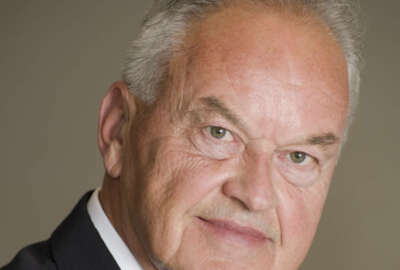
On a clear day, you can see your pay raise; COLA outlook cloudy
If federal benefits were reported like the weather, Senior Correspondent Mike Causey says the outlook for a pay raise is good but the retiree COLA is cloudy.
Federal workers and federal retirees hoping to have a little more spendable income in 2017 will learn how much — if any — that will be at about the same time. The final numbers that determine if there will be a cost-of-living adjustment (COLA) for retirees will be available in mid-October. That’s about the same time that feds will have a clearer view of what’s in store for their paychecks in January.
Non-postal feds who are still on the job have good reason to hope for a pay raise, as Federal News Radio’s Meredith Somers reported earlier. Federal retirees are hoping to end the two-year slump with a COLA. But the outlook isn’t good.
At the moment, the odds of a small pay raise are in your favor. The likely amount is 1.6 percent.
Odds of a COLA for retirees (including people who get military retired pay and Social Security benefits) are slim, at best. Many people don’t understand how and why the two groups often get different amounts. Everybody pays the same for a loaf of bread and a cup of coffee, right? And while gasoline prices are down, the medical costs for retirees are going in one direction — up.
More commentary
Lots of people, maybe most, confuse the terms pay raise and cost-of-living-adjustment. Members of Congress know better, but they always refer to a congressional pay raise as a COLA, even though it never is.
Pay raises are political animals. Presidents and/or the Congress base pay raises on the economy, politics and (sometimes) for fiscal reasons.
COLAs happen — or not — based on the rise in living costs from the third quarter of the current year (July, August and September) over the previous year’s third quarter. Intelligent, well-educated men and women have been known to burst into tears trying to figure out how inflation-adjustments are arrived at. Because there was no COLA this year (for 2017) and inflation continues to be low, nonexistent or actually going down some months, the process is even more complex than usual. Here’s how the National Active and Retired Federal Employees (NARFE) explained it in a an email legislative update it sent to its members:
“As a reminder, pay raises for employees are determined differently than COLAs for Social Security benefits and federal annuities. Pay raises must be authorized annually by Congress or the President, while COLAs are determined under an automatic formula, using the Bureau of Labor Statistics’ Consumer Price Index for Urban Wage Earners and Clerical Workers (CPI-W). Whether there will be a COLA in 2017 will not be determined until October, when the July, August and September CPI-W numbers are available.
Roth TSP: A Roth IRA On Steroids
The Roth TSP offered to federal and postal workers is definitely not like a Roth IRA. It’s a much better deal. Since Roth accounts are funded with after-tax dollars, investors with those accounts will not have to pay taxes (again) on those contributions when they are withdrawn. Also, all earnings will be tax-free if five years have passed since Jan. 1 of the year you made your first Roth contribution, and you are age 59 ½ or older, permanently disabled or deceased.
Wednesday’s Your Turn radio show featured financial planner Arthur Stein talking about the Roth option available to federal and postal investors through the TSP. To listen to it, click here.
Nearly Useless Factoid
The average number of Google searches per second is 2.3 million.
Source: Expanded Ramblings
Copyright © 2025 Federal News Network. All rights reserved. This website is not intended for users located within the European Economic Area.
Mike Causey is senior correspondent for Federal News Network and writes his daily Federal Report column on federal employees’ pay, benefits and retirement.
Follow @mcauseyWFED





